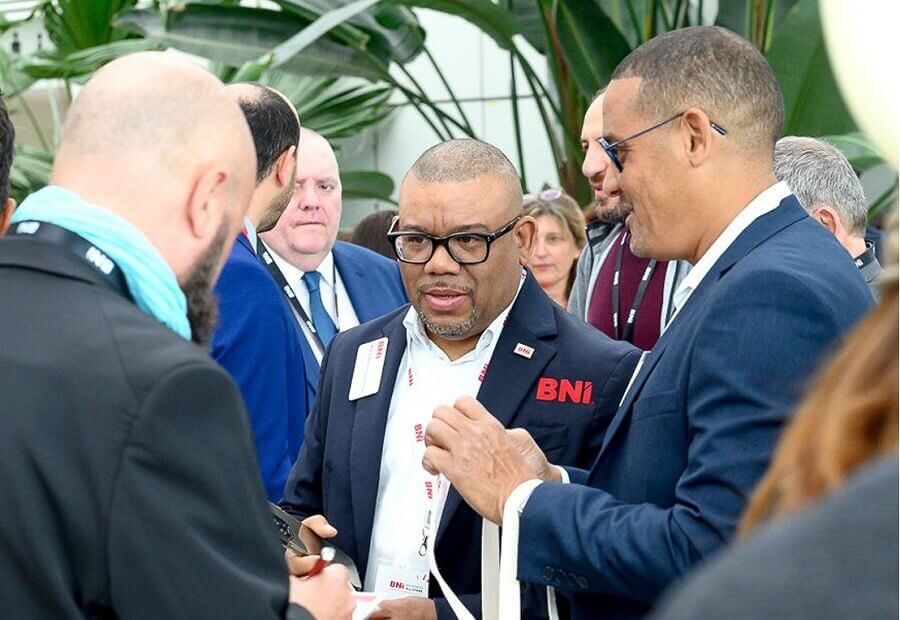From the Founder
Converting Referrals Into Customers or Clients

Getting referrals is great—however, until your prospect makes a purchase, you’re looking at only potential business. The number of referrals you convert into customers or clients actually measures the true success of your efforts.
Active, Not Passive
The only way to generate referrals is through other people. Although this method can work with new and developing relationships, I have designed it to be used primarily with strong relationships, people with whom you share a strong common interest over a long period.
The heart of the method is active, not passive, recruitment of referral sources. You can, of course, put the system in motion the moment someone tells you he or she knows someone who may need your products or services. But don’t wait around for referrals—go find them. The more high-quality referrals you can generate, the better your business will be.
You should recruit referral sources that meet the following six criteria:
- Those who want to, or can be inspired to, help you.
- Those who have time, or are willing to make the time, to help you.
- Those who have the ability, or can be trained to do, the things you want them to do to help you.
- Those who have the resources necessary to help you.
- Those who have relationships with the types of people you want to target.
- Those who would make good referrals for people you know.
It is crucial that your sources meet all, or most of the six criteria, in order to guarantee a long-term, sustainable referral relationship. Time and time again I have worked with frustrated business owners who can’t understand why they are not getting the referrals they should. On the surface, they seem to be doing all the right things. In many cases they discover that they have misdiagnosed the VCP Process® with their referral sources, or they are actively working with referral sources that don’t meet most of the six criteria above.
To strengthen your relationships with them, doing periodic 1-2-1’s is very important to get better acquainted with them. This helps you to understand the specific kinds of help you’ll need from them. And although a strong relationship with them is by itself one of the best referral generators, you’ve decided to use other tactics as well. One of the best ways to motivate your sources is to offer them help in using this referral-generating system to get their own customers and business opportunities.
Initial Contact
After you’ve compiled your list of excellent prospective referral sources, your next action is to begin contacting them. What’s the best way to get your message to them? Should you send them a letter, email or text them, or arrange to meet them in person? Any of these formats could work; however, your first communication with a prospective source is best done by telephone. It’s more personal and friendly than a written message, but it is more convenient for both you and your source than a face-to-face meeting.
Before you call, plan your call carefully. Decide which topics you want to cover. Remember, the purpose of your call is to ask for support in generating referrals, to give a brief overview of your plans, and to schedule an appointment to discuss your plans in detail. Here are a few guidelines:
- Begin with an appropriate greeting and small talk.
- State the purpose of your call and the amount of time you need.
- Ask whether this is a good time to talk.
- Get into the heart of your conversation by offering the person you are calling something of value. For example, explain how the topics you want to cover will help him.
- Tell your prospective source that you’d like to have their help in generating referrals for your business and ask for a meeting to discuss the details.
- Schedule a face-to-face meeting, an online video meeting, or a telephone call.
- Tell them you have some information for them to review.
Scripting Your Call
Although you shouldn’t expect to follow it mechanically, you may find it useful to prepare a script to anticipate how your first contact may go. To show you how to do this, we’ll invent a fictional character, Dr. Mark Star, whose goal is to recruit a referral source, Trudy Grossman, who might help him secure a radio talk show interview with her friend Ethel Clearchannel to promote his new book. Here is how a potential contact could play out:
Greeting: “Hi, Trudy.”
Small talk: “How are you doing? . . . How’s your family? . . . Did you go anywhere over the weekend?”
Purpose: “Trudy, the reason I’m calling is to see if you can help me get a radio talk show interview to promote my new book. And I’d also like to show you how I can help you generate referrals for your business. Right now I’d like to give you a quick overview of some ideas I have and get your reaction to them. Is this a good time? If you’re interested, we can arrange to discuss them later in more detail.” (If yes, continue.)
Overview: “As I’m sure you know, getting referrals is one of the best ways to generate business. I’ve been reading about an approach for generating referrals and I’ve prepared a plan that will help me attract more customers and business opportunities. It’s practical, and I believe it covers everything. If you’re interested, I’d like to show you how to use the system for your business, too. Are you interested?” (If yes, continue.)
Scheduling the meeting: “Great! I’d like to meet with you as soon as possible — say, within the next week or two — to tell you my ideas. It should take about an hour. When would be the best time for you?”
Close: “Okay, Trudy, I’ll send you an outline of what we need to discuss and some information that will help you understand how the system works. You should get it in a day or two. If you have any questions before we meet, please don’t hesitate to call. It was great talking with you. I look forward to our meeting on _ at _.”
Based on the guidelines and sample script, develop an outline that you can use for your initial contact with your prospective sources. After you’ve practiced this process, you can fine tune your script and begin making calls that can help lead you into closing referrals into business.
Called the “father of modern networking” by CNN, Dr. Ivan Misner is a New York Times bestselling author. He is also the Founder of BNI (www.bni.com), the world’s largest business networking organization. His latest book, Who’s in Your Room 2nd Edition, is a book about the secret to creating your best life.
Recent Posts
From Referrals to Results: How BNI Networking Helps Local Business Grow Faster
November 11, 2025
How Building Relationships is a Game Changer for Business Success in 2025
February 17, 2025

Experience the Power of referral networking in action
Get Invited



